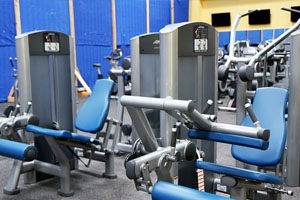Discover whether push-ups can be classified as aerobic exercises and explore the potential cardiovascular benefits Learn how push-ups fit into your fitness routine and their impact on overall health and fitness
Push-ups, a staple in many fitness routines, are often associated with strength training and building muscle. But are they also considered an aerobic exercise? In this article, we will delve into the world of push-ups, exploring their role in fitness and determining whether they meet the criteria of an aerobic workout. Whether you're a fitness enthusiast or just beginning your journey, understanding the nature of push-ups is essential for crafting a well-rounded exercise routine.

Understanding Aerobic Exercises
Aerobic exercises, often referred to as "cardio" exercises, are activities that increase your heart rate and breathing for extended periods. These exercises are known for their ability to enhance cardiovascular fitness and offer numerous health benefits.
What are aerobic exercises?
Aerobic exercises are physical activities that engage large muscle groups and require a constant supply of oxygen to the muscles. They include activities like running, swimming, cycling, and dancing. These exercises are characterized by their rhythmic and continuous nature, which challenges the heart and lungs.
How do aerobic exercises benefit health?
Aerobic exercises offer a wide range of health benefits, including:
- Improved cardiovascular health by strengthening the heart and reducing the risk of heart disease.
- Enhanced lung capacity and more efficient oxygen transport in the body.
- Weight management through calorie burning and fat loss.
- Better mental well-being, as aerobic exercises release endorphins that reduce stress and improve mood.
- Enhanced endurance and stamina for daily activities.
These exercises are essential for maintaining overall health and can be tailored to different fitness levels and preferences.
The Role of Push-Ups in Fitness
Push-ups are a classic bodyweight exercise that primarily target the muscles of the chest, shoulders, and triceps. While they are often associated with strength training, push-ups also play a role in overall fitness and can contribute to aerobic exercise routines.
Are push-ups considered strength training or aerobic exercise?
Push-ups are primarily categorized as a strength training exercise. They help build muscle strength and endurance, particularly in the upper body. When performed with proper form and in sufficient repetitions, push-ups can lead to muscle hypertrophy and increased strength.
What muscle groups do push-ups work?
Push-ups engage several muscle groups, including:
- Chest muscles (pectoralis major and minor)
- Shoulder muscles (deltoids)
- Triceps (back of the upper arms)
- Core muscles (abdominals and lower back)
These muscle groups work together during push-ups, making it a compound exercise that enhances overall upper body strength and stability.
The Cardiovascular Benefits of Aerobic Exercises
Aerobic exercises are renowned for their positive impact on cardiovascular health. They play a crucial role in enhancing the function of your heart and lungs, leading to several significant cardiovascular benefits.
How do aerobic exercises affect the heart and lungs?
Aerobic exercises, such as running, swimming, and cycling, significantly affect the heart and lungs in the following ways:
- Improved Heart Health: Regular aerobic exercises make the heart stronger and more efficient. This results in a lower resting heart rate and a reduced risk of heart disease. Aerobic exercises can also help lower blood pressure, reducing strain on the heart.
- Enhanced Lung Function: These exercises increase the demand for oxygen in the body. Over time, this improves lung function, allowing for better oxygen exchange and improved overall respiratory health.
- Boosted Circulation: Aerobic exercises enhance blood circulation throughout the body. This means that oxygen and nutrients are delivered more efficiently to your muscles and organs, contributing to overall health.
- Stress Reduction: Regular aerobic exercise triggers the release of endorphins, which are natural stress relievers. This not only improves mood but also reduces the risk of stress-related cardiovascular issues.
By engaging in aerobic exercises, you can significantly improve your cardiovascular health and reduce the risk of heart and lung-related problems.
Comparing Push-Ups to Traditional Aerobic Exercises
Push-ups, a strength training exercise, are often compared to traditional aerobic exercises in terms of their cardiovascular benefits and overall impact on fitness. Let's explore how push-ups measure up when compared to activities like running or cycling.
How do push-ups compare to running or cycling as aerobic exercises?
While push-ups are not traditional aerobic exercises, they can offer some cardiovascular benefits, but there are key differences:
- Intensity: Push-ups are a bodyweight exercise that primarily targets muscle strength. Traditional aerobic exercises like running and cycling are typically more intense and focus on elevating heart rate and breathing for extended periods.
- Calorie Burning: Traditional aerobic exercises are highly effective for burning calories, making them more suitable for weight loss. Push-ups, on the other hand, burn fewer calories due to their focus on strength building.
- Cardiovascular Fitness: While push-ups can improve cardiovascular health to some extent, they do not provide the same level of cardiovascular conditioning as traditional aerobic exercises, which are designed to enhance heart and lung function.
It's essential to recognize that push-ups and traditional aerobic exercises serve different fitness purposes. While push-ups are valuable for strength training, they are not a replacement for the cardiovascular benefits offered by activities like running or cycling.
FAQs about Push-Ups and Aerobic Exercises
Q1: What are aerobic exercises, and how do they differ from push-ups?
A1: Aerobic exercises are activities that raise the heart rate and require a constant supply of oxygen. They differ from push-ups, which are strength training exercises focusing on muscle groups like the chest, shoulders, and triceps.
Q2: Can push-ups be considered a part of an aerobic exercise routine?
A2: While push-ups are primarily strength training exercises, they can be integrated into an aerobic routine when combined with fast-paced movements, such as burpees or mountain climbers.
Q3: What are the primary benefits of aerobic exercises for cardiovascular health?
A3: Aerobic exercises enhance cardiovascular health by improving heart strength, lowering resting heart rate, reducing blood pressure, and enhancing lung function. They also boost overall circulation, reducing the risk of heart disease.
Q4: Do push-ups offer the same cardiovascular benefits as traditional aerobic exercises?
A4: No, push-ups primarily focus on strength training and do not provide the same cardiovascular benefits as traditional aerobic exercises. They target specific muscle groups rather than elevating heart rate for an extended period.
Q5: How can individuals integrate push-ups into their fitness routine for a balanced approach?
A5: Individuals can incorporate push-ups into their fitness routine for upper body strength and overall fitness. For a balanced approach, combining push-ups with traditional aerobic exercises like running or cycling is recommended to reap both strength and cardiovascular benefits.










